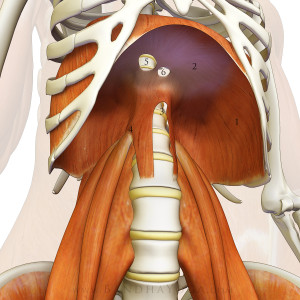Today I am going to teach you ways to own your breath and subsequently own your movement. We all know that breathing is a vital function that keeps us alive. You’ve likely heard of the term, respiration. Respiration refers to the ability to breathe on an unconscious level. Our body’s autonomic nervous system controls breathing, along with other automatic functions like digestion. Our brain is wired to keep us alive by controlling our breath, even when we aren’t thinking about it (even when we are asleep!).
Unlike many other autonomic nervous system functions, breathing is unique in that we have the ability to take control over this process and add an element of purposeful intent. By mentally checking in with our breath, we have the ability to determine it’s cadence and rhythm. As an athlete, we can learn how to manipulate the breath to fuel and strengthen different movements. Breathing is something we can train to work for us, and if we don’t train it, it can have the consequence of working against us.
Several athletes struggle with a lack of power or sense of stability in different parts of their training. Athletes spend all this time strengthening their muscles, but they often neglect one of the most important muscles of all; the diaphragm. The diaphragm is a muscular membrane that separates the thoracic cavity from the abdominal cavity. It exists within our rib cage and is the most important muscle involved in breathing. As a person breathes in and out, the diaphragm contracts and expands, forcing air to rush into or exit the lungs. The stronger the contraction and expansion, the stronger the breath. The stronger the breath, the more oxygen that becomes available to support increased blood flow to our muscles during our workouts. If you neglect this kind of training you’ll waste hours wondering why your training is plateauing and may never understand internal strength or explosion. Straightly put, you’ll implode instead of explode, when performing or functioning.
I’ve learned that the diaphragm is a muscle we take for granted. We can count on the fact that it’s always working, despite never giving it the proper care. After years of training, I’ve learned that relying on our diaphragm without taking time to understand it and care for it can create major problems over time. These problems vary. Some problems result in a weak core and unstable base, while others include lack of flexibility and ongoing joint pain. I’m going to talk briefly about how the diaphragm relates to the core, specifically, the psoas.
The diaphragm and psoas are the dynamic duo. I say this because the diaphragm and psoas work in tandem to allow us to move and breathe at the same time. Your psoas (another vital muscle we hear little about) is the only muscle to cross 3-sections of our body; the lumbar spine, pelvis, and upper leg. The psoas attaches the upper body to the lower body, while also connecting to the diaphragm through tendons and fascia which attach to our spine near the base of the pelvis. When the psoas and diaphragm are communicating with one another, they act to support the spine so that we can move freely in space. When these vital muscles are not communicating with one another, they shut off signals to other deep core muscles such as the transverse abdominis (TVA) and upper leg muscles. If the diaphragm or psoas is inhibited, it will cut off access to your quad and several other lower extremity muscles leaving the load of your body to be supported by other muscles who may otherwise not be designed to do so. This means reduced strength and power in movements such as the squat, lunge, deadlift, and pretty much anything. Breathing is everything in movement (especially weight and endurance training) and working the diaphragm is a way to increase power and increase output.
In the video below, I’ve included 3 diaphragm exercises. They are exercises in learning how to relax (or release) the diaphragm and how to engage (or strengthen) it. The goal is to practice these at the start of your warmup. This will help bring awareness to your breath and will wake up your diaphragm so it is ready to work with you, purposefully instead of automatically, in training. You can also incorporate these exercises in your cool down as a way to take care of these muscles so that they can support you through the rest of your day.
Remember, chest-breathing = bad breathing. Deepen your breath by focusing on your naval and watching it move in toward your spine as your exhale. It can take years of practice and discipline to master the breath and make full use of the diaphragm’s capabilities. And that’s okay- time is on our side! If you think you are someone that might want to make some time to focus on this important element of training in order to see better results in the gym and to increase your overall quality of life, come talk to me. We can discuss ways to incorporate breath-work more intentionally into your training to address your specific goals.
Own your breath- don’t let your breath own you!
Thanks for reading!
Rob

